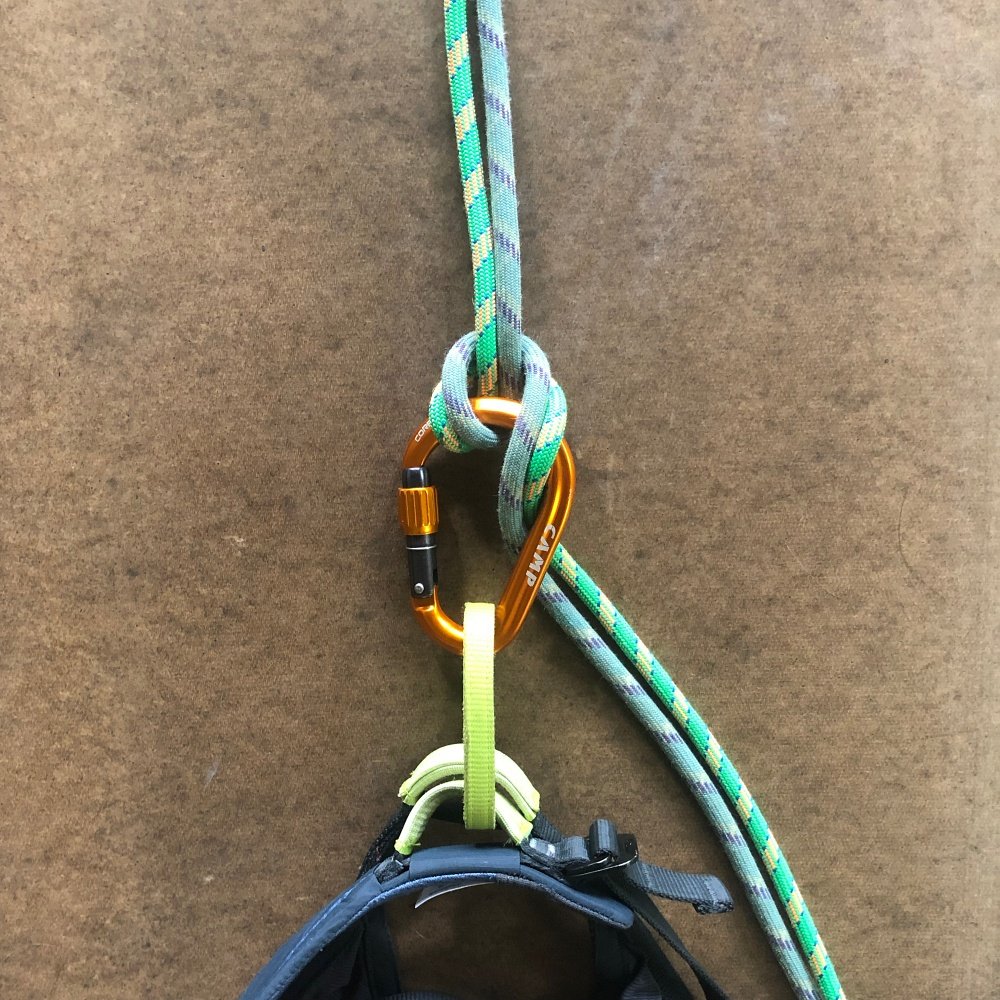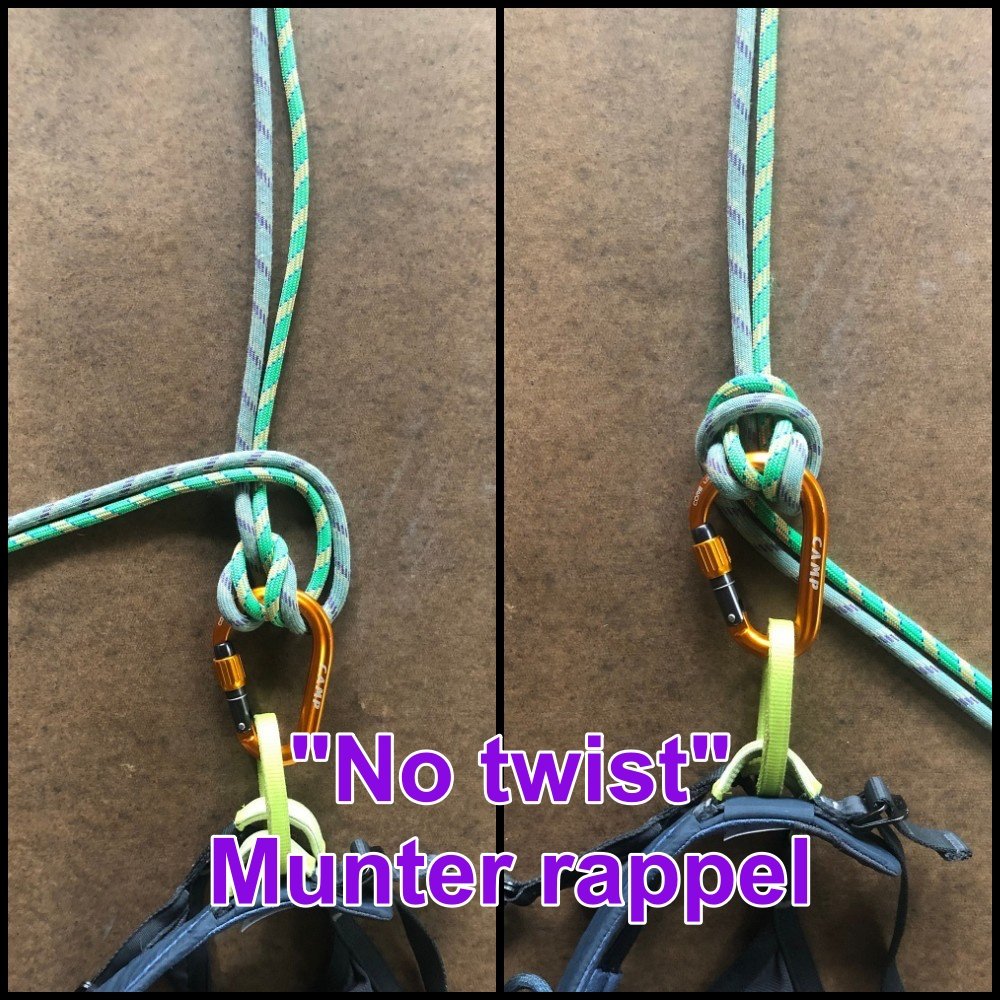The no twist Munter hitch rappel
Note - This post discusses techniques and methods used in vertical rope work. If you do them wrong, you could die. Always practice vertical rope techniques under the supervision of a qualified instructor, and ideally in a progression: from flat ground, to staircase, to vertical close to the ground before you ever try them in a real climbing situation.
Rappelling on a Munter hitch is considered by some to be an outdated, old school technique, right up there with hip belays, hexes, and braiding your own harness out of blackberry vines.
However, in some cases it can still be useful:
If you know you have some short rappels on a canyon explore, ski mountaineering trip, bushwhack hike or similar, and want to take minimal gear
Ropes are frozen and hard to get into a rappel device; sometimes the Munter is the only thing that can work
You're using ultra skinny 6 mm static cord (like the Petzl RAD line) which is too small for a standard rappel device
You don't have enough locking carabiners (or forgot, or never learned how) to set up a carabiner brake
Dropped or forgot your device (whoops!) and for whatever reason do not want to be lowered
Have to rappel in some kind of emergency situation (river rescue?) when you're seriously short on gear
Need to rappel past an overhand knot (fairly advanced maneuver, learn about it here)
Want to earn some Euro style points =^)
Why can a Munter rappel be problematic?
Not create enough friction (more concerning with small diameter newer ropes or single strand)
Depending on which way you face the carabiner, the rope can rub against the gate
Most important, the normal way it’s done can twist the holy hell out of your rope! This is more than an annoyance, because if you have twisty “pigtails” in your rope and then try to pull it through the rappel anchor, the twists can bunch up and cause the rope to get completely stuck at the anchor, big problem.
(Side note: here's a good way to remove any kind of twisting from your rope: clip a tube style belay device into any sort of an anchor around head height, and feed the rope through the device.)
Below: Standard way to set up a Munter rappel. Pretty much guaranteed to twist your rope.
However, there is a simple modification you can do to the hitch that will keep those evil twists away. I first saw this technique in a video from Petzl Germany. I have to say I was a little skeptical when I first saw this, but I've tried it a couple of times and it works just fine.
Pass the brake strands over the TOP of the hitch, then pass them back UNDER the carabiner to your right hand. Rappel normally, with no twisting.
Notes . . .
This adds a little more friction and slightly slows down your rappel, but most of the time that's a good thing. If you have fat, old, crusty ropes, and you don't weigh much, it might add too much friction. As mentioned at the top of the page, practice in a controlled environment is mandatory.
This method works best on a standard harnesses with a fairly stiff belay loop. If you have a lightweight alpine harness with kind of a floppy belay loop, the loop can twist when you do this, and it doesn't work so well.
You might be familiar with the “Supermunter.” This is a Munter hitch, with the brake strand making an extra pass around the hitch and being clipped to the carabiner. This can be a very useful tool for lowering huge loads on a skinny rope, but it's not recommended for one person on a double rope rappel because it adds too much friction and you probably won't be able to move. More on the “Supermunter” at this article. This modified hitch is very close to a Supermunter.
When practicing, don't be too concerned which strand of rope is on the top or the bottom. The ropes tend to put themselves in the proper orientation when she put weight on it and start actually descending.
I'm certainly not saying you should start rappelling on a Munter all the time. But if you ever need to, keep in mind that with this technique a Munter rappel works fine with minimal twisting.
Single strand with a “super Munter”
Another option for the Munter rappel is to descend on a single strand, and use a “super Munter”. Fix the rope at the anchor so it can't slide through, rig a super munter on one strand with a large carabiner, and down you go. Depending on your weight and the rope diameter, this should work well with a single strand and also result in a no-twist rappel. (Of course, the last person down on fixes the rope and needs to descend on two strands.)
Check out the short video from Petzl to see how it's done.


